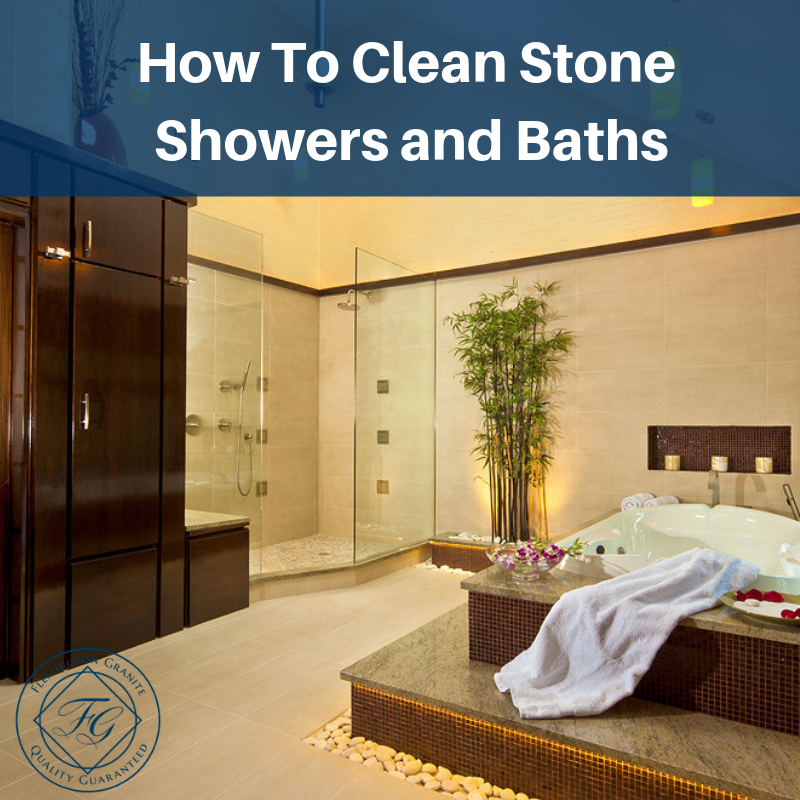
Stone surfaces in your kitchen and bath can be beautiful, organic and “warm” in ways no other material can really accomplish. However, it’s common for most people to be very apprehensive about what’s a safe way to clean these. Most contractors will make a point to warn homeowners that these stones can be stained, and that some chemicals can etch the surfaces, which is basically eating away at them. Repairing these stone surfaces can be an undertaking, and a costly one at that.
This is a bigger problem in a shower, where soap scum, mildew, and calcium or lime deposits are an ongoing issue. It takes, naturally, stronger cleaning products than just plain water and mild soap to get stone clean under these conditions, and it takes a little extra care, as well.
Take heart, today we’re going to go over five key points to cleaning and caring for stone surfaces in your shower!
#1 – Regular Cleaning is a Must
Unlike tile, fiberglass or other materials, you can’t get away with a hasty cleaning every couple weeks, with your stone. You need to clean it weekly, and you need to put a little time and care into it.
Using something like Granite Gold® cleaner to frequently remove soap scum, mildew and water deposits, will help prevent them from staining the stone, and prevent them from hardening and showing up (thus becoming harder and harder to remove as a whole).
#2 – Excess Water is a Problem
While clean, pure water can’t actually harm your stone (at least, not in the course of several human lifespans), excess shower water will lend to deposits, mildew, and more soap scum. Thus, removing excess water with a gentle rag and a squeegee after each shower helps lighten the amount of cleaning you need to do weekly.
#3 – Bleach for Mildew
Bleach is actually safe to use on stone surfaces, as it’s not acidic. Bleach helps to sterilize the stone (and sanitation is important), as well as kill molds and mildews, and hinder their regrowth in the future.
There was a time, not that long ago, when many people would warn against using bleach on stone, claiming it would fade it, or weaken it, but this is just not true. Bleach can fade substances which have some sort of pigmentation in them (cloths, organic materials, printed materials), but the color of stone is endemic to the minerals that compose it, and they don’t change colors unless blasted with UV for very long times – longer than your home will likely exist.
#4 – The Grout Matters
You don’t have nearly as much visible grout with natural stone, as you might with tile, but there’s still definitely going to be some. Cleaning your grout is just as important, and once more, bleach works fine for this, unless your contractor warns you of some specialty grout in use (not likely). Using a soft tooth brush, or stiff horse hair brush, is the best scrubbing tool for this job.
#5 – Regular Sealing is Crucial
It may not seem like it, but there is actually a protective layer between the raw stone, and the outside world. Stone sealants are applied when the surfaces are fabricated, but water, heat, and simple friction do wear these away over time.
It’s important to re-seal your stone on a regular basis (every 5-10 years if not more often), as this layer prevents the stone, which has a 10% permeability, from absorbing things that can discolor it, as well as astringents that can etch it.
To learn more about caring for stone in your home, fill out our contact form today!






